Unplugged: The Star Wars RPG – Force and Destiny
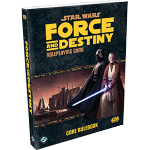 Star Wars: The Force Awakens is set to appear a month from now. Aside from repeatedly watching the film’s trailers, how will a Star Wars fan manage to occupy their time? Enter the Star Wars Role Playing Game from Fantasy Flight Games. A story-oriented game, it features streamlined rules so that player actions aren’t bogged down with complicated rules. Many aspects of combat, such as range, are abstracted and most actions are quickly resolved with a simple roll of custom dice. The core rules have been released in three different settings, with the newest one, Force and Destiny, focusing on force sensitive characters under the Empire’s rule (Episodes IV through VI.)
Star Wars: The Force Awakens is set to appear a month from now. Aside from repeatedly watching the film’s trailers, how will a Star Wars fan manage to occupy their time? Enter the Star Wars Role Playing Game from Fantasy Flight Games. A story-oriented game, it features streamlined rules so that player actions aren’t bogged down with complicated rules. Many aspects of combat, such as range, are abstracted and most actions are quickly resolved with a simple roll of custom dice. The core rules have been released in three different settings, with the newest one, Force and Destiny, focusing on force sensitive characters under the Empire’s rule (Episodes IV through VI.)
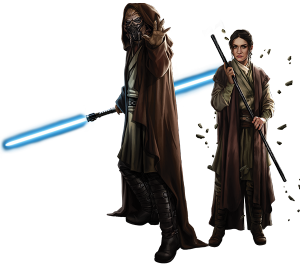 The Force and Destiny Core Rulebook is a thick volume (has all the rules needed for players and focuses on force sensitive characters, both Jedi as well as others. There are two other Core Rulebooks: Edge of the Empire (with rules for characters who live on the edge of society like bounty hunters, smugglers, etc… and includes droids as a race option,) and Age of Rebellion (focusing in on underdog rebels fighting against the Empire.) The three books can be interchanged and combined, with only a few thematic differences. Each of the core rulebooks contain everything needed for play, although players also need either a set of special Star Wars RPG dice, or the die rolling app for the game. While it is nice to pick and choose one’s setting for the game, it is unfortunate that the basic rules portion of each core rulebook is reproduced in each volume. While having another copy around for reference, it does increase the overall weight (and possibly cost) of having multiple books containing core rules.
The Force and Destiny Core Rulebook is a thick volume (has all the rules needed for players and focuses on force sensitive characters, both Jedi as well as others. There are two other Core Rulebooks: Edge of the Empire (with rules for characters who live on the edge of society like bounty hunters, smugglers, etc… and includes droids as a race option,) and Age of Rebellion (focusing in on underdog rebels fighting against the Empire.) The three books can be interchanged and combined, with only a few thematic differences. Each of the core rulebooks contain everything needed for play, although players also need either a set of special Star Wars RPG dice, or the die rolling app for the game. While it is nice to pick and choose one’s setting for the game, it is unfortunate that the basic rules portion of each core rulebook is reproduced in each volume. While having another copy around for reference, it does increase the overall weight (and possibly cost) of having multiple books containing core rules.
One feature of the game is the idea of Destiny points. These are points rolled at the start of a session and represent the the ebb and flow of the Force throughout the session. During play, the players and the GM (gamemaster – who guides the story) may flip a Destiny point from light to dark or dark to light in order to gain an advantage during the game. If a player uses up too many light side destiny points, be prepared for the GM to come back with a few surprises for using those accumulated dark side points.
In Force and Destiny, players can choose from 8 species which determine a character’s starting characteristics. Characters then choose one of 6 careers which determines a character’s set of beginning skills. Each career has three specializations, which dictate the specifics of most of a character’s future progression. While the careers give a player a general idea of their typical role in a party (combat, support, academic, etc…), specializations are more closely related and tend to flesh out the specific way a character would try to accomplish their goals. For example, the Consular career could specialize as a Healer, exclusively focusing on healing, or specialize as a Niman Disciple, using lightsabers and force powers to more effectively fight multiple opponents at once. Finally, characters also can acquire and improve Skills and Talents. Skills tend to be useful in a broad range of situations, where Talents are more beneficial but only in specific circumstances. Much of the combat and force powers are learned through talents.
In addition to a race, class, and specialization players are given a starting pool of “experience” to spend in building up their character, often called a point-buy system. This is carried through to extended play. Characters earn more experience during adventures and can then further improve their skills and talents. It should be noted that the game is setup for characters to begin rather unskilled and grow into their talents. Beginning characters do not even have any force talents to start and are not expected to have or be able to use a lightsaber. Of course, one can always start playing with more experienced characters (giving them more experience to spend right after their character is created.) The downside of this is the complications of more options available, which may be overwhelming for a new player. Starting out and then growing more powerful is also a great way for players to more fully develop their character before they make larger choices about what powers and abilities they would like to select. After earning 150 experience points, characters are considered to be “knight level” and would expect to have their lightsaber (if that’s part of their character) and have much of their character’s powers developed. They won’t yet be as powerful as a full Jedi, but would be well on their way. Guidelines are provided for gamers who prefer to start out at that higher level.
Unique to the Force and Destiny core rulebook is the idea of Morality. In Edge of Empire, players together have a pool of Obligation, which represents their debts and favors owed to various factions in semi-criminal fringe. In Age of Rebellion, the players have a pool of Duty which tracks their commitment to the rebellion and its allies. Both pools are a story-oriented mechanism that rewards players for furthering their group goals and can represent situations where they may end up acting against the interest of “big picture” people.
In Force and Destiny, Morality represents the pull of the light and dark sides of the Force. It is tracked separately for each character, and goes up or down at the end of each gaming session. Characters (we’re not about players) who find themselves making choices in a grey area of morals earn conflict. At the end of a session, players roll against their conflict total to see if their morality goes up or down. Characters who fall low enough, “turn” to the dark side and gain penalties and benefits. Likewise, attaining an exceptionally high mortality will also provide a character with different rewards.
The book itself is a thick, sturdy title that is filled with plenty of thematic graphics. Fans will instantly recognize most of the characters and settings drawn. All the images are evocative art, rather than still images taken from the movies and convey a stronger sense of theme than a simple freeze frame would be able to achieve.
Most of the book involves rules and advice for running a game. Character creation, hand to hand and vehicle combat, advice for a beginning Gamemaster and so on… About a third of the book serves as background information about the current state of the galaxy. Star systems, organizations, equipment, non-player characters (and other enemies) and other bits of information about things of interest are included. At the end of the book there is a short adventure which can be quickly set up to help a new set of gamers get a feel for the game.
However, if you are not sure about the game and want to dabble in it a bit first, I can’t recommend the various Beginner Game sets enough. There is a separate Beginner game box for each core rulebook. All three contain a moderately short scenario adventure for players that is designed to teach players the rules while they play. A box contains four pre-generated characters, a map for the scenario, a set of the special Star Wars dice, and a short reference rulebook. Fantasy Flight even provides several more starting characters from which to choose and an entire second scenario for each game at their web site. Included in the books is information for a gamemaster to invent their own adventures so that players can continue their adventures for several more levels. The quick reference rules guide and the included dice are almost worth the cost of the set, so I highly recommend any (or all) of the beginner sets. They also serve as a good starting place to figure out which of the three core rulebooks interest you the most. Those wishing to have the most options can start with one and then increase their library to include the other two books. Due to its inclusion of force-sensitive characters, the new Force and Destiny core rulebook will likely be the preferred starting point for most players.
No matter which rulebook you choose, the Star Wars RPG is a great game for beginning players. Most players will be familiar with the setting, the rules are relatively straightforward, and most actions (combat and other skill checks) are simple to resolve. As with most RPGs, one only needs a set of dice and imagination to play. Bring your dice and a notebook along with you and you can play in line while you wait to watch Episode VII!

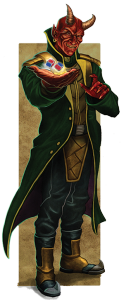
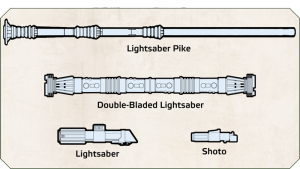
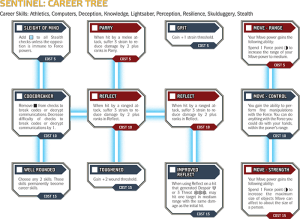
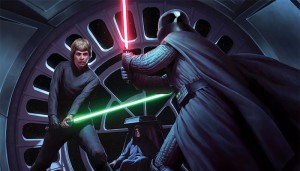
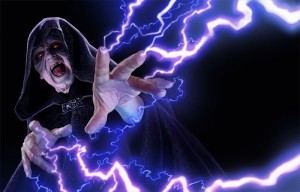
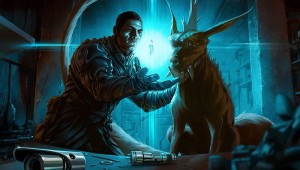
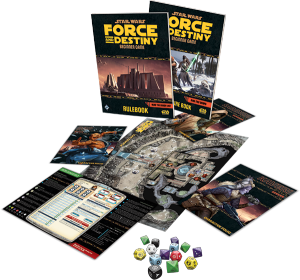
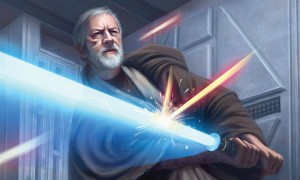




Discussion Area - Leave a Comment